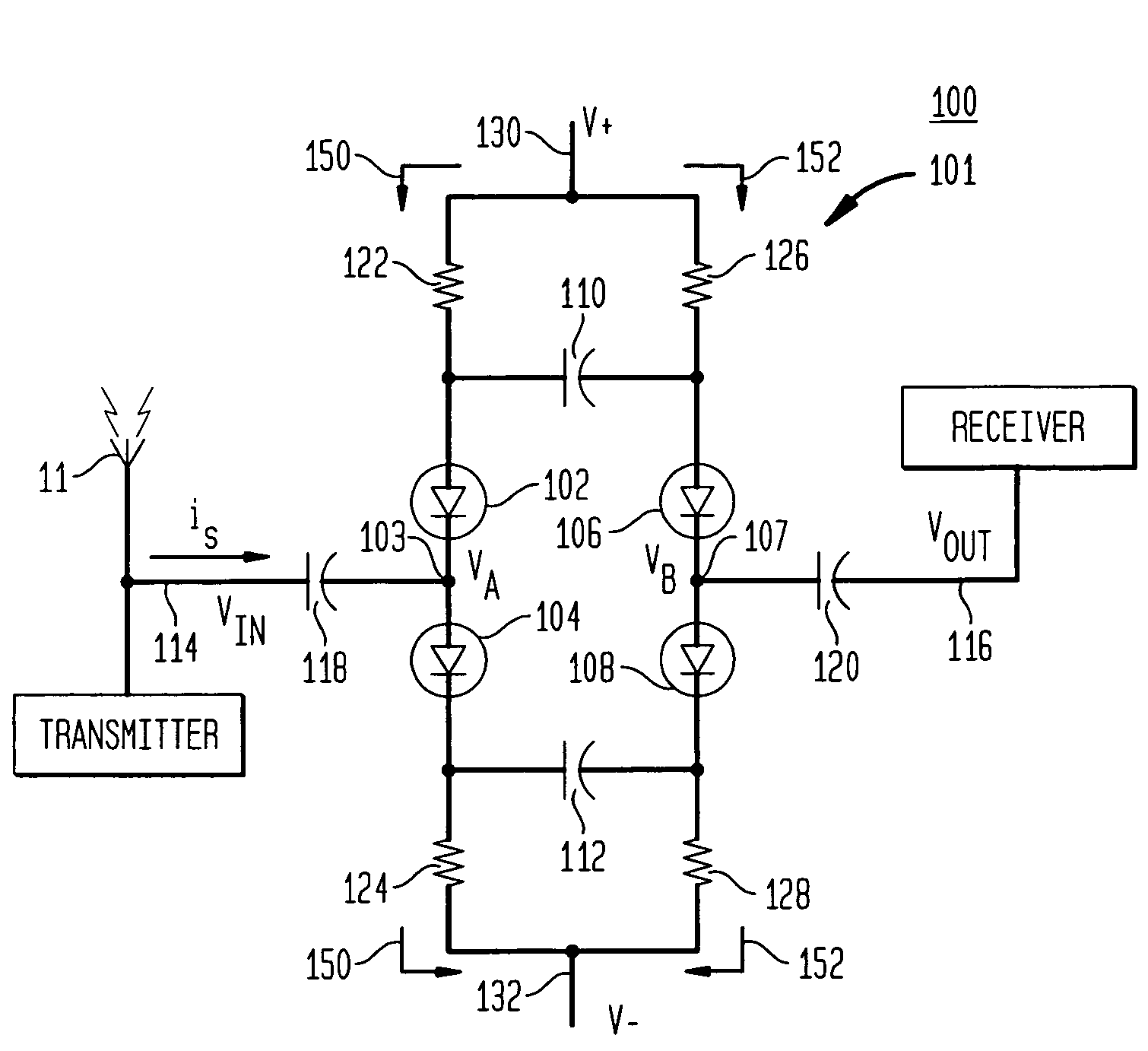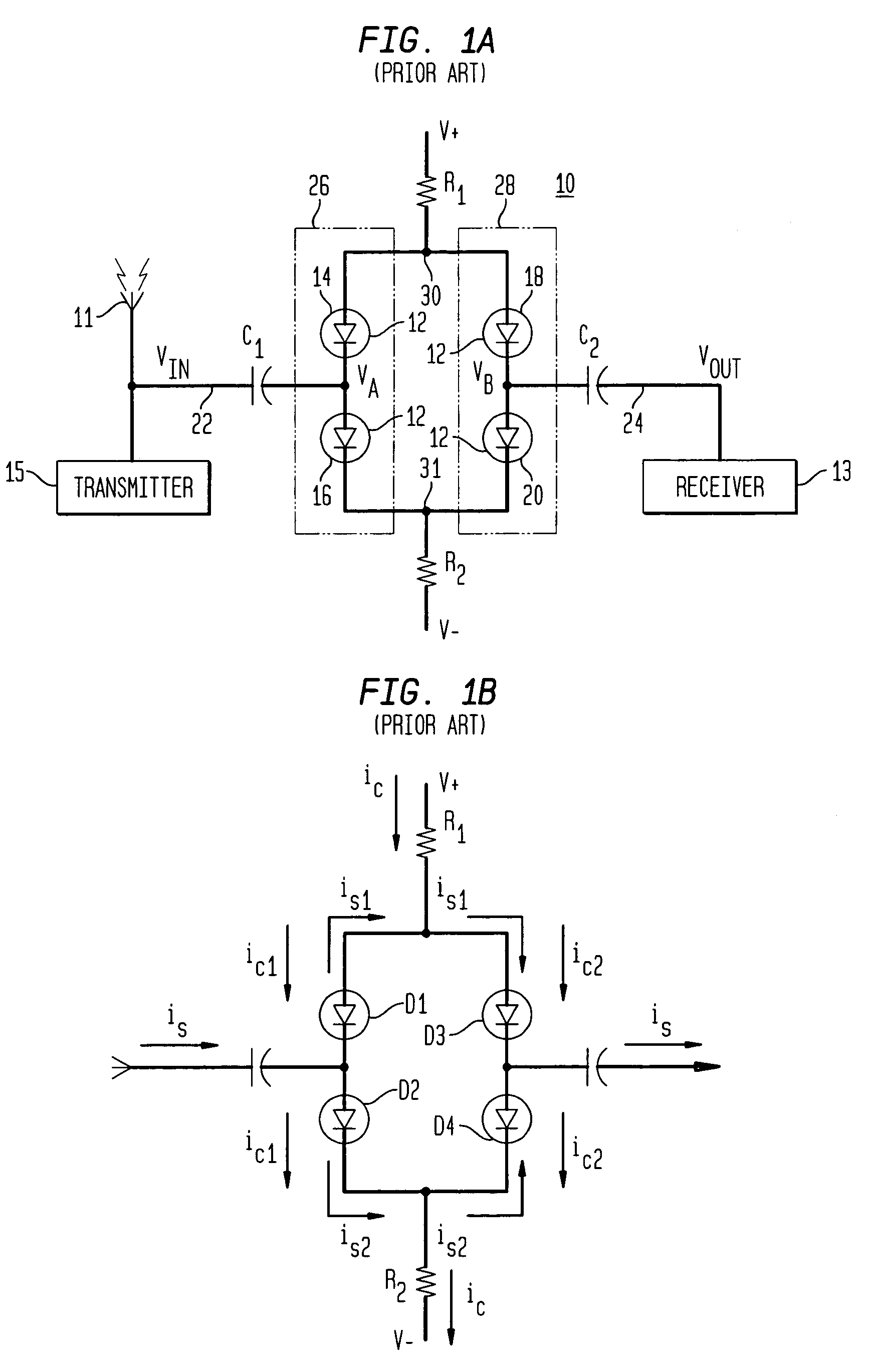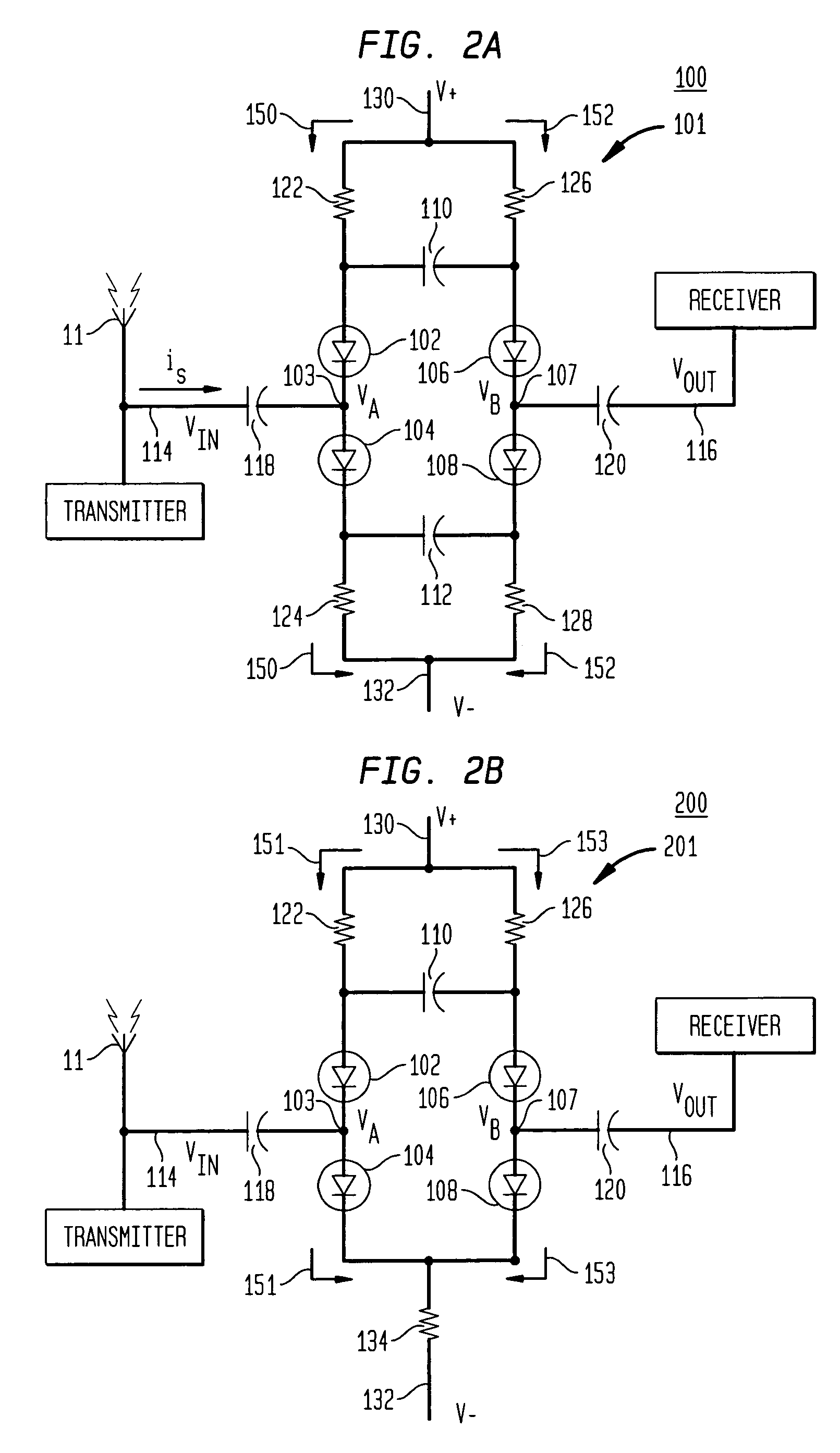Transmit and receive protection circuit
a protection circuit and transmit and receive technology, applied in the field of electronic protection circuits, can solve the problems of loss in the protection circuit, poor matching of discrete diodes, and loss of transmit and receive circuits, etc., and achieve low ac resistance, accurate reproduction, and low loss.
- Summary
- Abstract
- Description
- Claims
- Application Information
AI Technical Summary
Benefits of technology
Problems solved by technology
Method used
Image
Examples
Embodiment Construction
[0016]The present invention discloses a superior transmit and receive protection circuit for use in a communication system. The invention allows the DC current through individual diodes of a four-diode gate to be selectively controlled. By controlling the currents through the individual diodes, the protection circuit can offer improved predictability and loss characteristics without the need for elaborate diode matching. The present invention can be implemented with minimal cost using readily available components.
[0017]FIG. 2A depicts a preferred embodiment of the present invention in an exemplary communication system 100. In the preferred embodiment of the present invention, the protection circuit 101 comprises an input side 150 comprising resistor 122, diode 102, diode 104, and resistor 124 connected in series between a first potential 130 and a second potential 132; and an output side 152 comprising resistor 126, diode 106, diode 108, and resistor 128 connected in series between ...
PUM
 Login to View More
Login to View More Abstract
Description
Claims
Application Information
 Login to View More
Login to View More - R&D
- Intellectual Property
- Life Sciences
- Materials
- Tech Scout
- Unparalleled Data Quality
- Higher Quality Content
- 60% Fewer Hallucinations
Browse by: Latest US Patents, China's latest patents, Technical Efficacy Thesaurus, Application Domain, Technology Topic, Popular Technical Reports.
© 2025 PatSnap. All rights reserved.Legal|Privacy policy|Modern Slavery Act Transparency Statement|Sitemap|About US| Contact US: help@patsnap.com



